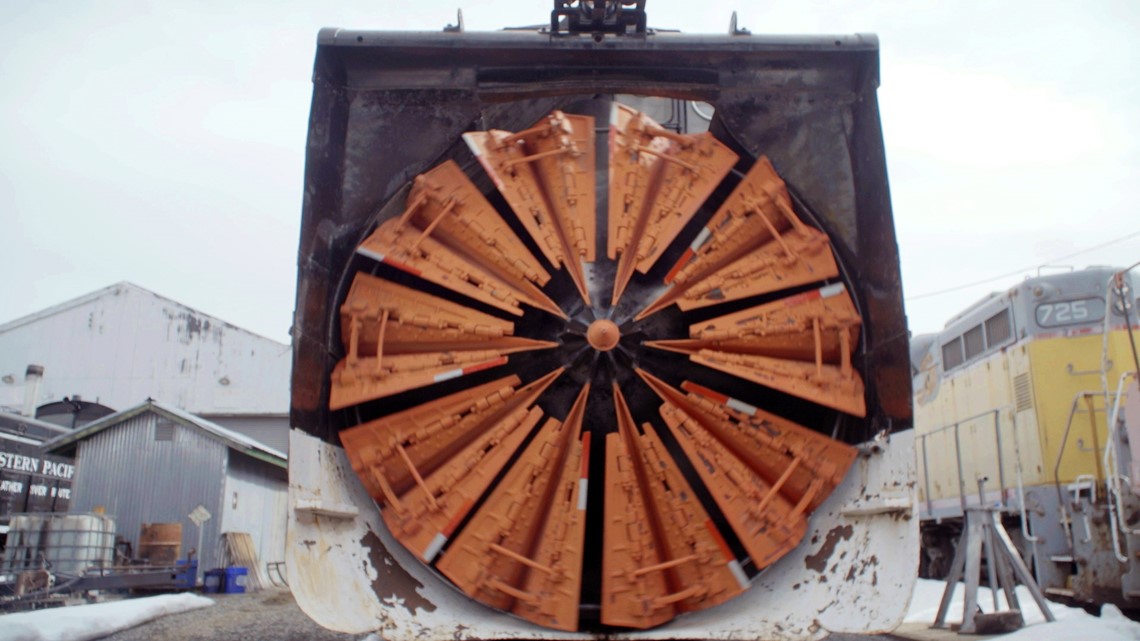PORTOLA, Calif. — Snow in the Sierra is a good thing, but when there is too much, railroad operators have to call in a rotary snow plow. The giant snowblower attaches to the front of a locomotive and clears the tracks by throwing the snow high into the air.
It is rare to witness the rotary plow in action, but when conditions are right, the Western Pacific Railroad Museum in Portola will fire up their 1927 Leslie Patent Rotary Snowplow, also known as the SPMW 208. This locomotive is a cherished antique and it’s been Charlie Spikes' childhood dream to operate it.
"I can remember this ever since I started remembering," said Charlie. "It’s an absolute thrill to be able to operate this machine."


Charlie is a volunteer at the WPRM. He grew up watching the rotary snow plow moving snow out of Sparks, Nevada.
The SPMW 208 used to run on steam, but in the 1970s it was converted to diesel-electric. It takes a small army to operate the rotary plow and the museum only brings it out when it needs to move lots of snow off the tracks.
Charlie says the massive rotary blades are powered by a 1,500 horsepower, 600-volt electric engine that devours snow.
"It can throw the snow 150 feet or so," Charlie said. Not an easy thing to do considering how snow in the Sierra is some of the hardest in the nation. Some call it "Sierra cement."
In 1952, the SPMW 208 (numbered 7208 at the time) was one of the rotary snow plows involved in rescuing 222 passengers trapped on a train near Donner Pass.
The Western Pacific Railroad Museum offers rides in the rotary plow and other locomotives. If you are lucky, you may even get the opportunity to operate the plow in the snow.
Continue the conversation with John on Facebook.
________________________________________________________________
WATCH ALSO: Longboard Ski Race | Bartell's Backroads
The oldest ski race in the U.S. started during the gold rush era in the early 1860s. Miners built long wooden skis out of vertical-grained Douglas fir to get around in the snow.

